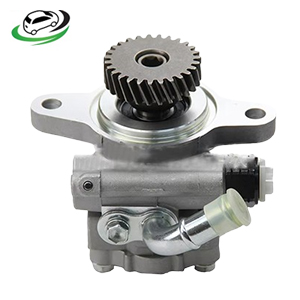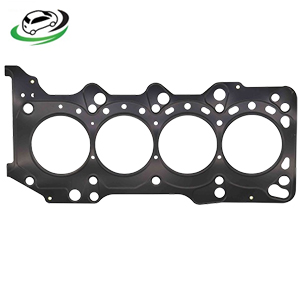-7%
Get AUDI A3, 8V1, 8VA, Transmission Filter Assy 13050755401
The transmission filter assembly is a crucial component in an automatic transmission system, playing a vital role in maintaining the health and efficiency of the transmission by filtering out contaminants from the transmission fluid. Understanding its structure, function, and maintenance is essential for ensuring the longevity and performance of a vehicle’s transmission system.
Structure and Components
The transmission filter assembly typically comprises several key components:
- Filter Medium: The heart of the filter, usually made from materials such as paper, felt, or a synthetic mesh. It is designed to trap particles, debris, and sludge from the transmission fluid.
- Housing: The casing that holds the filter medium in place. This can be made of plastic, metal, or a combination of both. The housing is designed to be durable and withstand the pressures and temperatures of the transmission system.
- Gaskets and Seals: These components ensure a tight fit between the filter and the transmission case, preventing fluid leaks and maintaining pressure within the system.
- Pickup Tube: This part connects the filter to the transmission pump, allowing the filtered fluid to flow back into the transmission.
Benefits of Transmission Filter Assy
1. Protection of Transmission Components
The transmission filter traps contaminants such as metal shavings, dirt, and debris that can accumulate in the transmission fluid. By removing these particles, the filter protects vital transmission components—such as gears, clutches, and valves—from wear and tear, ensuring smooth and reliable operation.
2. Improved Transmission Performance
Clean transmission fluid, free from contaminants, facilitates smooth shifting of gears and reduces friction within the transmission. This leads to better performance, with smoother transitions between gears, less slippage, and more responsive driving.
3. Extended Transmission Lifespan
By preventing contaminants from circulating through the transmission system, the filter reduces the risk of damage and excessive wear. This can significantly extend the lifespan of the transmission, reducing the likelihood of costly repairs or replacements.
4. Enhanced Lubrication and Cooling
The transmission fluid serves both as a lubricant and a coolant. A clean filter ensures that the fluid retains its properties, providing adequate lubrication to reduce friction and heat generation. This is crucial for preventing overheating and ensuring the transmission operates within optimal temperature ranges.
5. Prevention of Transmission Failure
Regularly replacing the transmission filter and fluid can prevent the buildup of harmful deposits that could lead to transmission failure. A clogged or dirty filter can cause fluid starvation, resulting in overheating and excessive wear, potentially leading to transmission breakdown.
6. Cost Savings
Maintaining the transmission filter assembly through regular service intervals can lead to significant cost savings in the long run. Preventive maintenance is generally much less expensive than major transmission repairs or replacements caused by neglect.
7. Improved Fuel Efficiency
A smoothly operating transmission contributes to overall vehicle efficiency. By ensuring that the transmission fluid is clean and the system is free from contaminants, the transmission can operate more efficiently, which can improve the vehicle’s fuel economy.
8. Consistent Vehicle Performance
A clean transmission filter ensures that the transmission fluid remains at the proper pressure and flow rate. This consistency is crucial for maintaining steady and reliable vehicle performance, particularly in automatic transmissions that rely on hydraulic pressure to shift gears.
9. Reduced Emissions
A well-maintained transmission can contribute to lower emissions. Efficient transmission operation reduces the engine’s workload, leading to more efficient combustion and lower emissions. This is particularly beneficial in meeting environmental regulations and standards.
10. Peace of Mind
Knowing that the transmission filter is clean and the fluid is in good condition provides peace of mind to vehicle owners. It reduces the likelihood of unexpected transmission issues, ensuring reliable vehicle performance and reducing the stress associated with potential breakdowns.
Importance in the Transmission System
The transmission filter assembly is integral to the transmission system’s overall health for several reasons:
- Protecting Components: By removing contaminants, the filter prevents wear and damage to the transmission’s gears, clutches, and valves.
- Maintaining Fluid Quality: Clean transmission fluid ensures smooth shifting and efficient operation, reducing the likelihood of overheating and slipping.
- Extending Lifespan: Regularly maintained filters can significantly extend the lifespan of the transmission by preventing premature wear and failure of internal parts.
Maintenance and Replacement
1. Erratic Shifting
One of the most common signs of a worn-out transmission filter is erratic shifting. This can manifest as:
- Hard Shifts: The vehicle may jerk or shudder when changing gears.
- Delayed Shifts: There may be a noticeable delay between gear changes.
- Slipping Gears: The transmission may slip out of gear or shift unexpectedly.
2. Transmission Overheating
A clogged or failing transmission filter can impede the flow of transmission fluid, causing the transmission to overheat. Symptoms of overheating include:
- Burning Smell: A distinct, burning odor coming from the transmission fluid.
- High Transmission Temperature Gauge: For vehicles equipped with a transmission temperature gauge, a high reading indicates overheating.
3. Unusual Noises
Strange noises coming from the transmission area can indicate a problem with the filter. These noises can include:
- Grinding or Clunking: These sounds often occur when shifting gears and indicate that the transmission components are not properly lubricated.
- Whining or Humming: A whining noise could be due to fluid starvation caused by a clogged filter.
4. Fluid Leaks
A worn-out filter assembly can lead to leaks in the transmission system. Indicators of a leak include:
- Puddles of Transmission Fluid: Visible puddles of reddish fluid under the vehicle.
- Low Fluid Levels: Frequent need to top up transmission fluid levels.
5. Contaminated Transmission Fluid
Inspecting the transmission fluid can provide clues about the state of the filter:
- Dirty or Discolored Fluid: Healthy transmission fluid is typically a bright red. Dark or brown fluid indicates contamination and potential filter issues.
- Metal Shavings in Fluid: Presence of metal particles in the fluid suggests that the filter is not effectively trapping debris.
6. Poor Vehicle Performance
A compromised transmission filter can affect the overall performance of the vehicle:
- Reduced Acceleration: The vehicle may struggle to accelerate smoothly.
- Decreased Fuel Efficiency: The engine may work harder, leading to increased fuel consumption.
7. Transmission Warning Light
Many modern vehicles are equipped with sensors that detect transmission issues. If the transmission warning light or check engine light illuminates on the dashboard, it could indicate a problem with the filter or the transmission system.
8. Unresponsive Transmission
A failing filter can cause the transmission to become unresponsive:
- No Movement in Gear: The vehicle may not move when shifted into gear.
- Stuck in Neutral: The transmission may get stuck in neutral despite shifting into drive or reverse.
9. Fluid Pressure Issues
A clogged filter can affect the fluid pressure within the transmission system, leading to:
-
- Fluid Foaming: Bubbles in the transmission fluid, caused by air entering the system.
- Low Fluid Pressure: Reduced pressure can affect the performance of the hydraulic system that controls gear changes.
Follow us on Facebook for more parts.



